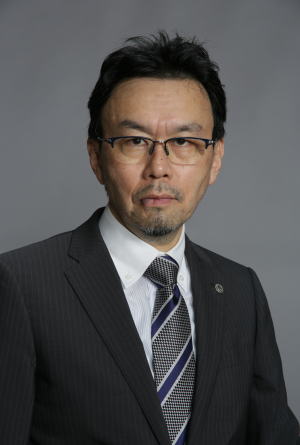Message from Prof.
Message

The Department of Microbiology, Oita Medical University was launched in 1980 by our former professor (and currently professor emeritus of Oita University), Dr. Kumato Mifune. In 1999, Dr. Akira Nishizono succeeded Prof. Mifune. In 2003, Oita Medical University merged with former Oita University. This prompted the change in the name of our department from Department of Microbiology to Department of Infectious Diseases and Molecular Therapeutics. In 2008, because of reorganizations in our university, the name of our department was changed back to Department of Microbiology.
From the time it was launched up to the present, the main themes of our researches are to clarify the relevance between the pathological mechanisms and the host response to viral infection, especially the onset mechanism of rabies virus infection. It has been more than 50 years since the last case of rabies was reported in Japan. At present, Japan is already a Rabies-free country. This is very remarkable since there are only a few countries worldwide who can claim to have reached this status. However, as a result of the present globalization of infectious diseases, there is a possibility of rabies infection re-emerging in Japan again.
Our department of microbiology is the only one laboratory that studies on rabies among the Faculty of Medicine in Japan. So, we utilize the uniqueness of our laboratory, and we conduct comprehensive researches on rabies from the aspect of virology, epidemiology, and preventive medicine and therapeutics. One of our most important missions is to pass down the legacy in order to prevent rabies researches from dying out in Japan.
Furthermore, in order to grasp the infection dynamics of emerging and re-emerging infectious diseases globally and locally, we conduct the researches on viral infectious diseases with field works and on the molecular mechanisms and immune responses related to pathogens.
Our project themes are divided into four groups.
- Researches on emerging and re-emerging infectious diseases, especially a comprehensive research on rabies.
- Diagnosis of SARS-CoV-2 and serological study of COVID-19.
- Applications to the diagnosis and therapeutics with antibodies
- Epidemiological researches on emerging and re-emerging infectious diseases from a glocal view point.
- To clarify the HTLV-I Tax-mediated oncogenesis mechanisms and to develop countermeasures which target NF-kB.
Moreover, we promote collaborative programs and joint research projects between industries and universities. In collaborative research, we work with other organizations such as National Institute of Infectious Diseases, Nagasaki University and U.S. - Japan Cooperative Medical Sciences Program. In a joint research between industry and universities, we develop human antibodies for therapy and rapid diagnostic techniques. Through these, we can see infectious diseases from a higher perspective. I believe that doing research on many pathogens makes healthcare providers interested in not only the research itself but also in different infectious diseases.
Prof. NISHIZONO, Akira
The history of our laboratory
| 1980 | Established by The late Kumato Mifune(currently Professor emeritus) |
| 1999 | Dr. Akira Nishizono became Professor |
| 2000 | Chenged the name into "Department of Infectious Diseases and Molecular Therapeutics". |
| 2008 | Changed the name into "Department of Microbiology" |
